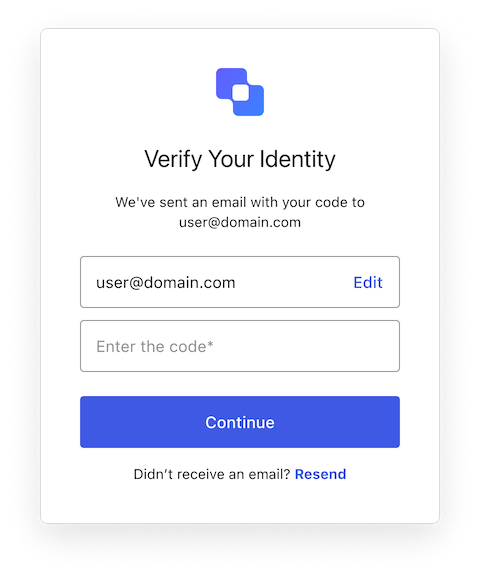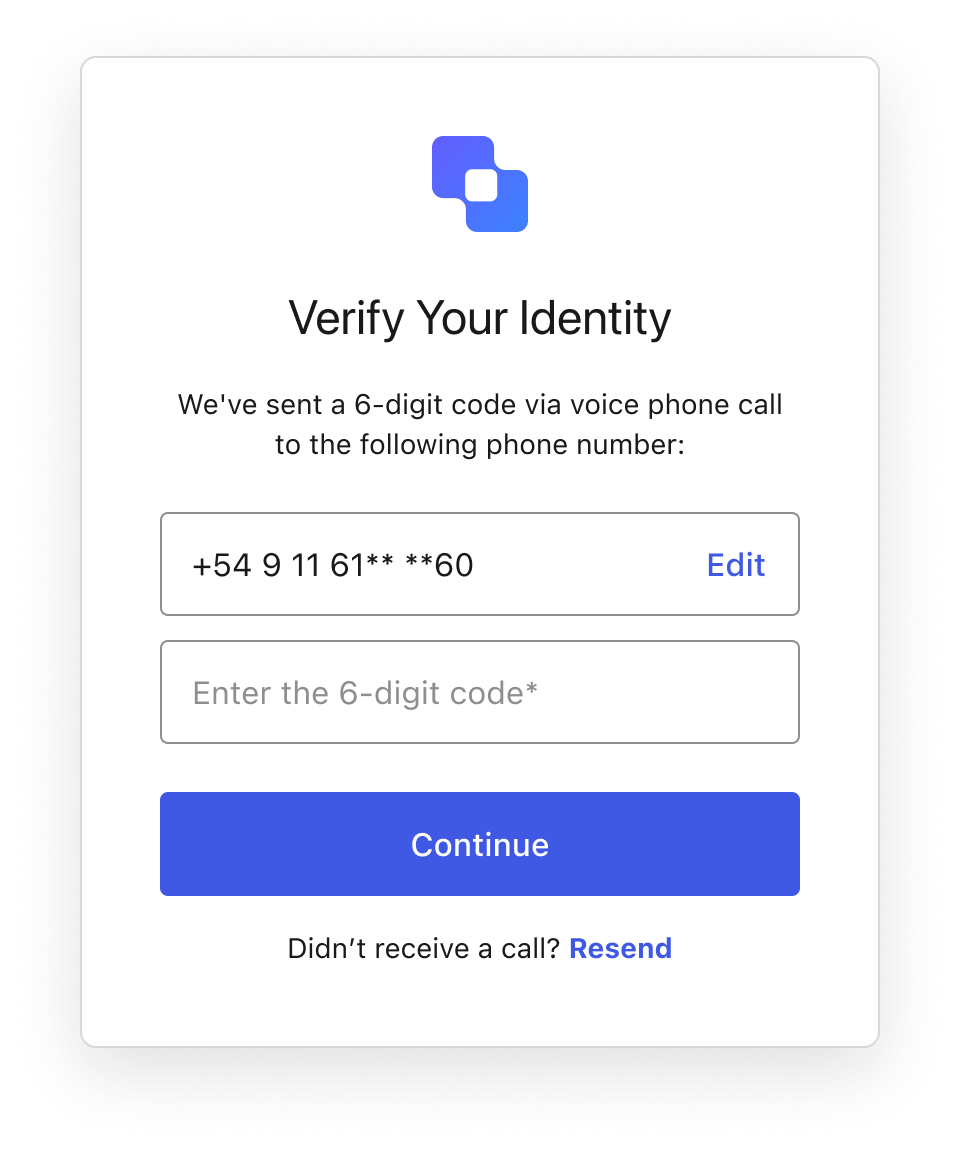Before you start
You need:
- An Auth0 development tenant with Universal Login configured.
- A custom-domain-configured application.
- A development app or a sample app (like the React sample app) running on your localhost
- A database connection that uses a passwordless connection.
Setup
In your , set up Universal Login, Identifier First Authentication, and a Database Connection that uses passwords. Run a single-page application to build custom login screens. To understand the context for Advanced Customizations interfaces, clone our boilerplate app:git clone https://github.com/auth0/auth0-acul-react-boilerplate
Install the ACUL SDK. After cloning the react boilerplate, change the directory to the auth0-acul-react-boilerplate folder and install the SDK.
Option 1: Build the Passwordless Login screen for email

Passwordless Email
Passwordless Email
Import and initialize the SDK
In theauth0-acul-react-boilerplate/src folder, create a folder called screens and a file called Login.tsx Import the SDK and in the React component initialize the SDK for the screen.
Use the SDK to access properties and methods on the screen
Using the SDK you can access the properties and methods of the screen. The Auth0 ACUL JS SDK provides properties and methods to access the data.Call the submit action
Using the SDK, submit the data captured in the screen to the server. The server process this data and will route the user to the next step in the flow. If there are errors, this screen is reloaded, allowing you to display them to the user. Errors are accessed from the SDK.Option 2: Build the Passwordless Login screen for SMS

Passwordless for SMS
Passwordless for SMS
Import and initialize the SDK
In theauth0-acul-react-boilerplate/src folder, create a folder called screens and a file called Login.tsx. Import the SDK and in the React component initialize the SDK for the screen.
Use the SDK to access properties and methods on the screen
Using the SDK you can access the properties and methods of the screen. The Auth0 ACUL JS SDK provides properties and methods to access the data.Call the submit action
Using the SDK, submit the data captured in the screen to the server. The server process this data and will route the user to the next step in the flow. If there are errors, this screen is reloaded, allowing you to display them to the user. Errors are accessed from the SDK.Step 3: Configure ACUL to use local assets
Use Auth0 CLI, Terraform, or the to enable ACUL. For details about what can be configured, read Configure ACUL Screens.- Auth0 CLI (Recommended)
- Auth0 Terraform
- Auth0 Management API
In the root directory of your project, create a Enable ACUL with Auth0 CLI:
settings folder and include in it a {SCREENNAME}.json file.
